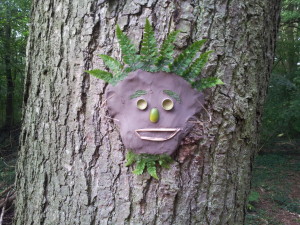Den in the Woods – Our Forest School Holiday Clubs
We cater for all ages from 5 years up to 12 years of age.
(Age 3+ if they already attend our pre-school)
A range of exciting activities to suit the age of the children and their skill levels.
Grappenhall (Warrington) 09:00 to 15:00 Tuesday, Wednesday and Thursday
Our philosophy is based on the Forest School approach, which puts the child at the centre. Children will develop their independence and resilience, communication skills, their imagination and thinking, teamwork, and of course have loads of fun in the process.

The outdoors is the absolute best place for children to be. They are natural explorers and little scientists finding out about the world for themselves with the support of experienced and caring adults. Children will connect with and understand nature, themselves and each other in a deep and meaningful way because the outdoors is such a rich and stimulating environment. They will experience the changes of the seasons and learn about nature first hand, as well as how to look after themselves and each other.
Grappenhall:
We will prepare at our Grappenhall Scout Hut base then set off on a different adventure each day. We will walk to a variety of locations in the local area and set up a day camp with everything that we need for the day. We will take part in a huge variety of different activities such as playing games, building dens, studying and caring for the environment, craft with natural materials and lots of time for free play and exploration. Our passionate, experienced and highly qualified staff will work with and observe each individual child and ensure they have lots of fun and that their needs are addressed. We will return to base before the end of each session for some important time to come together, share our experience, reflect on the day and collectively plan for future adventures.
Please ensure that all children bring a packed lunch on the day with a water bottle. We will provide snacks during the day. Also please ensure they have appropriate clothing for the conditions forecast for the day.
More information on clothing for forest school can be found here;
You can view a map of our location here;
Some activity examples
(from our Curriculum page)
Shelter building
Fairy/teddy bear shelters: scaled down versions of normal shelters.
Miniature world: Similar to above with different theme.
Animal shelters: learners ‘become’ an animal a make suitable shelter/den/nest.
Journey stick: learners encouraged to collect objects of meaning during the session that are then attached to the journey stick, which can be later used as a reviewing tool.
3D journey review: Learners review whole/part of journey in 3D model form
Animal tracking
Bugs on bushes: place a piece of plastic under a bush/tree. Gently shake and catch creatures that fall out.
Broom making: Lash smaller sticks to a larger length of wood to create a basic broom.
‘1,2,3 where are you!?’ – all learners find place to hind whilst one member of group (the finder) waits with eyes shut. After hiding time up, the finder shouts ‘1,2,3 where are you’ and the hiders reply ‘I’m over here’. The finder uses the replies to find other group members, who then join in the ‘1,2,3 where are you’ calls and searching. Good activity for constant inclusion for all group during task. Activity can linked into prey/predator, shelter, camouflage, etc discussions.
Leaf snap: pupils pick set number of different leaves and play ‘snap’ with other group members.
Mini beast hunt
Scavenge hunt
Kelly kettles (at landowners permission) natural drinks e.g. mint or nettle tea
Tree height and circumference: construct isosceles triangle to measure distance across ground, which equals to height of tree.
Opposite words: Each learner is given a pair of contrasting words e.g. dry, damp…light, dark and have to collect examples of these. Other learners have to guess the given words from their examples.
Bark rubbings
Woodland art
Casting pewter (additional cost involved)
Blindfold tree hug: learners take it in turns to lead blindfolded partner to a tree. Blindfolded person feels/smells tree before returning to start point where they have to try to identify the tree again un-blindfolded.
Woodland pallets: learners given area to collect contrasting woodland objects e.g. colour, texture, age.
Camouflage corridor: objects foreign to woodland environment hidden for learners to try and visually identify whilst travelling through the ‘corridor’.
Moles eye view: learners lie on woodland floor to experience the environment from a different perspective.
Woodland instruments: replicating natural woodland sounds
Stepping stones: Natural sensory ‘stones’/piles made and learners, blindfolded, try identify objects using their bare feet.
Woodland cocktails: Learners use natural resources to make ‘woodland cocktail’ using cups and sticks as pestle and mortar or cocktail shakers! Visual or smell themes will direct learning.